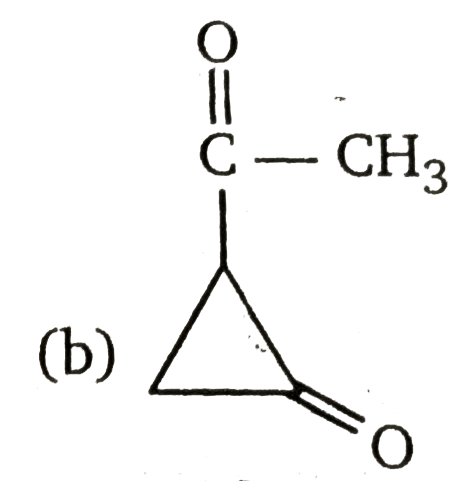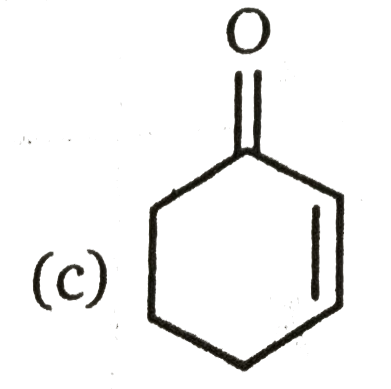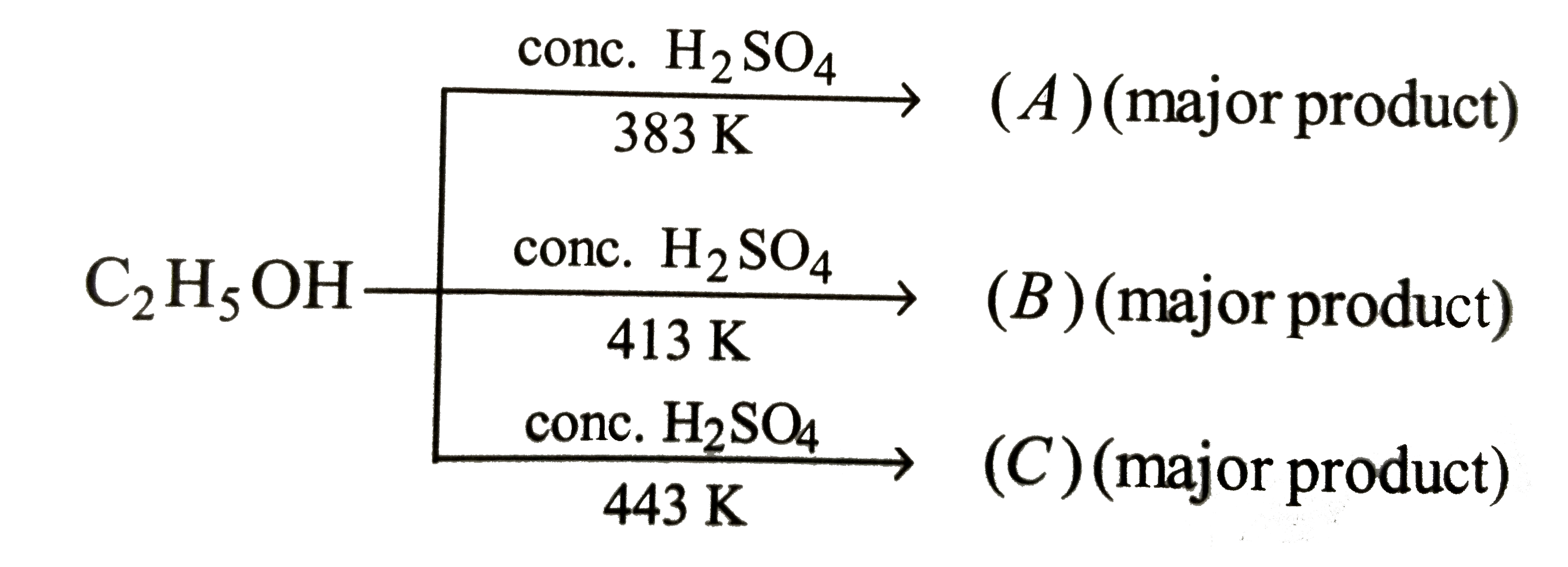An organic compound A (C4H10O) has two enantiomeric forms and on dehydration it gives B (major product) and C (minor product). B and C are treated with HBr/Peroxide and the compounds so produced were subjected to alkaline hydrolysis then
B will given an isomer of A
C will give an isomer of A
Neither of then will give isomer of A
Both B and C will give isomer of A
The correct Answer is:B
(A) is CH3CH2−OH| C H−CH3H2SO4−−−→CH3CH=CH−CH3(Major)B+CH2=CHCH2CH3(Minor)C
Addition in C will occur against Markownikov's rule. Hence C will give isomer of (A) i.e., it will form 1-Butanol.
Topper's Solved these Questions
- ORGANIC COMPOUNDS WITH FUNCTIONAL GROUP CONTAINING HALOGENS BOOK - DINESH PUBLICATIONCHAPTER - ORGANIC COMPOUNDS WITH FUNCTIONAL GROUP CONTAINING HALOGENS EXERCISE - UNIT TEST - 5
37 Videos
- ORGANIC COMPOUNDS WITH FUNCTIONAL GROUP CONTAINING HALOGENS BOOK - DINESH PUBLICATIONCHAPTER - ORGANIC COMPOUNDS WITH FUNCTIONAL GROUP CONTAINING HALOGENS EXERCISE - BRAIN TEASERS - 9
40 Videos
- NO IDEABOOK - DINESH PUBLICATIONCHAPTER - NO IDEAEXERCISE - Unit Test -
1 Video
- POLYMERSBOOK - DINESH PUBLICATIONCHAPTER - POLYMERSEXERCISE - Matrix
5 Videos
Similar Questions
An organic compound 'A'(C4H10O) is optically active. On mild oxidation, it gives a compound 'B'(C4H8O) but upon vigorous oxidation, it gives another compound 'C'(C3H6O2). The compound 'C' along with 'D' are also formed from 'B' by reacting with iodine in the presence of alkali. Deduce the structures of 'A','B','C' and 'D'.
View SolutionAn organic compound (A) , C4H8Cl2 on hydrolysis forms another compound (B) , C4H8O.
If all possible structures of (B) visualised above in (a) and (b) are treated with Zn - Hg/HCl , what are the products ?
View Solution
Knowledge Check
Compound A and B, both were treated with NaOH, producing a single compound C.
 Compound C is:A
Compound C is:A B
B C
C D
D
An organic compound (A) (MG C4H10O) upon dehydrogenation gives a compound (B) which forms phenyl hydrazone. With phenylhydrazine and both the compounds (A) and (B) respond to iodoform test. Hence the compound (A) is:
A B
B C
C D
D
Wthanol is dehydrated as,

Major products (A),(B) and (C ) are respectively :A(A)(B)(C)(A)C2H5HSO4C2H5OC2H5C2H4B(A)(B)(C)(A)C2H4C2H5OC2H5C2H5HSO4C(A)(B)(C)(A)C2H5HSO4C2H4C2H5OC2H5D(A)(B)(C)(A)C2H5C2H5HSO4C2H5OC2H5
An organic compound (A) (C8H14O) forms an oxime and gives a positive haloform reaction. On ozonolysis, it gives acetone and a compound (B) (C5H8O2) . (B) forms a dioxime and on subjecting to oxidation reaction gives an acid (C ) (C4H6O4). On treatment with excess of ammonia and strong heating, (C ) gives a neutral compound (D) (C4H5O2N). (D) on distillation with zinc dust forms pyrrloe. Suggest the possible structures of (A), (B), (C ), and (D). Explain the chemical reactions involved.
View SolutionAn organic compound 'A' (C3H6O) is resistant to oxidation but forms compound 'B' (C3H8O) on reduction. 'B' reacts with HBr to form the compound 'C' .'C' with Mg forms Grignard's reagent 'D' which reacts with 'A' to form a product which on hydrolysis gives 'E'. Identify 'A' to 'E'.
View SolutionAn organic Compound (A) with molecular formula C6H12O2 was hydrolysed with dil. H2SO4 to give an alkene as major product and alcohol as minor product. The structure (A) is:
View SolutionAn organic compound [A] is C5H8O3.On heating with soda lime, it gives [B]. The compound [B] reacts with HCN to give another compound [C] which reacts with thionyl chloride to produce [D]. When the compound [A] is heated with potassium dichromate the product is acetic acid and malonic acid.
The structure of compound [A] is :
View SolutionAn organic compound [A] is C5H8O3.On heating with soda lime, it gives [B]. The compound [B] reacts with HCN to give another compound [C] which reacts with thionyl chloride to produce [D]. When the compound [A] is heated with potassium dichromate the product is acetic acid and malonic acid.
The compound [A] is a
View Solution